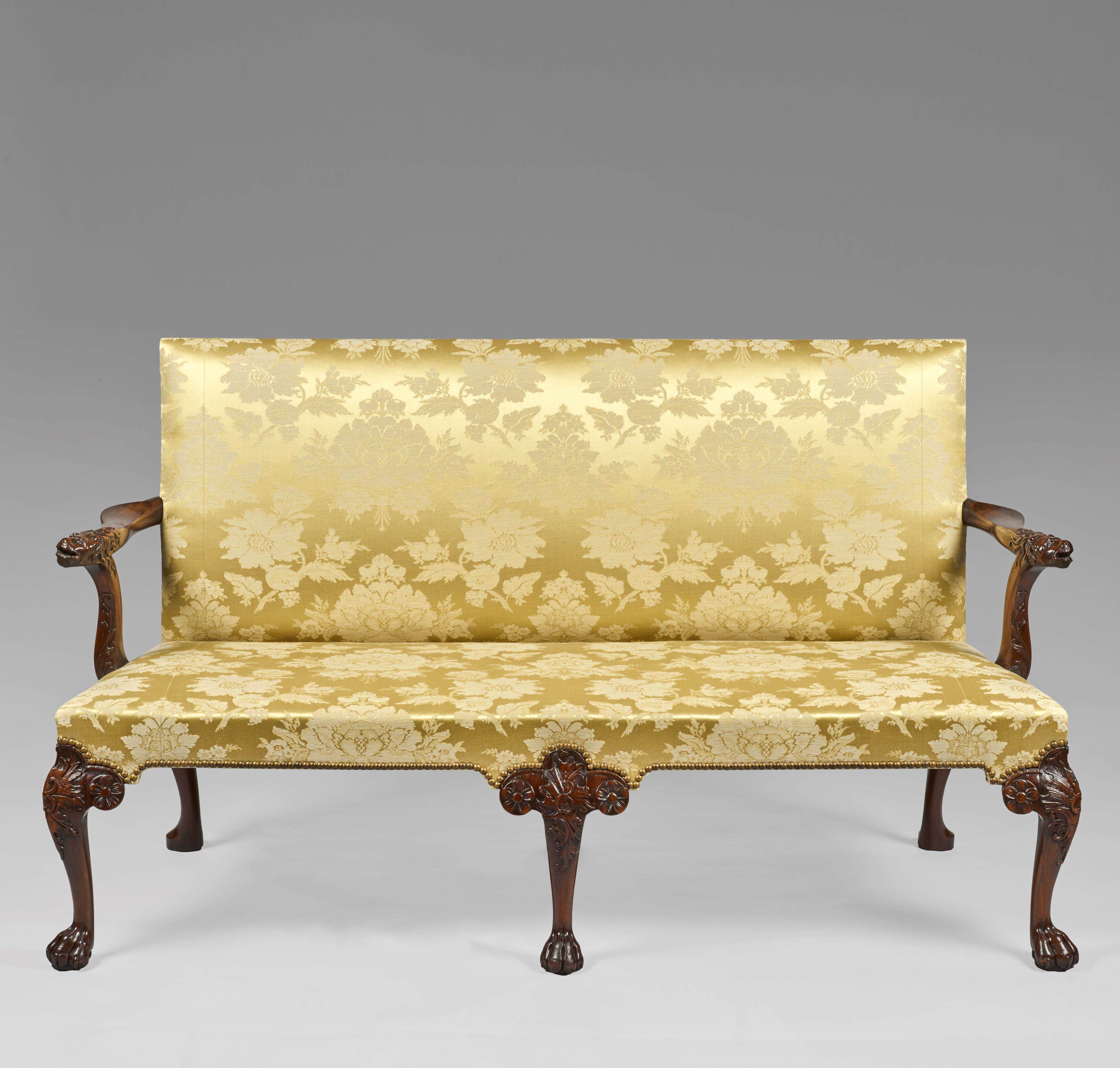The greatest collector of English furniture?

Percival D Griffiths FSA (1862-1937) was probably the greatest collector of 'classic' English carved mahogany and walnut furniture of the late 17th and 18th centuries and many of pieces from his collection have passed through Mallett. His collection is the subject of a new two volume study by Christian Jussel and William DeGregorio, and published by Yale. Volume one covers Griffiths' celebrated collection of English furniture, largely assembled with the help of the expert R W Symonds from 1908 (when they met), until Griffiths' death when out fox-hunting in December 1937. Volume two covers his equally remarkable collection of English needlework.

Reassembling in book form a collection formed between 1900 and 1937, but always evolving must have presented the authors with great difficulties and complexities, not least tracking down illustratons and details of such pieces - but the presentation of all the objects is clear and consistent, with crisp and succinct cataloguing. Such an approach must have been dictated by an uneven availability of objects. The motivation for the book came from the late John Bryan, Jr, whose own collection of English and Arts and Crafts furniture is also justly renowned. John Bryan made his collection accessible to many, but inevitably many objects are untraced or were inaccessible to the authors. They have relied, therefore, on historic images either from dealers, auction houses or archives.
The study is a remarkable achievement and very richly produced and beautiful to handle, and comes with an elegant slipcase. In my view there are two specific reasons why it is also notable: first, Griffiths' collection was, common to most truly passionate collectors, fluid: pieces came and went, as pieces were re-examined, or better examples were found to replace those already in the collection. From 1908-09 he took the advice of Robert Wemyss Symonds (1889-1958), who assessed his purchases and found buyers for pieces he wished to sell. If he or Symonds came across, or knew where to find a better example of a piece he owned, he went after it, usually making a generous offer to buy it. Thus there was an almost continual process of upgrading and editing, there was no fixed point when the collection could be said to have been at its zenith. Second, the type of collection and collecting as exercised by Griffiths is rare if not entirely without parallel today. Therefore we look back on his collection from a standpoint of approximately a century and view Griffiths as something of a curiosity.
He was and is a legend, a titan, a name to conjure with certainly, but cut from different cloth from those active in the cut and thrust of the marketplace today. He was focused on objects made during a certain time period (late 17th to mid-18th century), of a particular type (carved mahogany and walnut) and, considered only those items he and Symonds thought represented the best colour, design and condition. He lived in a charming house, Sandridgebury in Hertfordshire, without electricity. After his death, the best pieces from his collection were sold to collectors, Symonds acting on behalf of Griffiths' widow. In the UK the National Art Collections Fund bought four pieces for the Victoria and Albert Museum (W.34-37 -1938) and his widow presented a mirror to the same museum in his memory (W.39-1938).

Symonds arranged for the sale of major pieces to collectors in the USA, and a number of pieces owned by Griffiths were bought by Judge Irwin Untermyer, who assembled a superb collection of furniture with Symonds' assistance. He donated the majority of his collection to The Metropolitan Museum of Art in 1964.

Other institutions in the USA also own pieces from Griffiths' collection, notably the Colonial Williamsburg Foundation and the Philadelphia Museum of Art.

Today, collectors, dealers, connoisseurs, curators all place great store by the chronology of ownership, and documentation recording either commission, or an object's physical presence in a collection at a particular point in time, while these aspects were not ignored by Griffiths or Symonds, they were not considered as important as the value of close looking, a pure physical assessment, rather than a less tangible reliance on historic documentation. It was the quality of craftsmanship (literally manufacture), the design proportions and the condition which ruled their judgements. The legacy of Griffiths and Symonds' approach continues today, as pieces which passed through Griffiths' collection continue to draw strong interest from collectors, a little under a century after Griffiths and Symonds applied their selection criteria.


.svg)
.svg)








.jpg)



